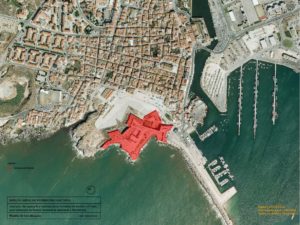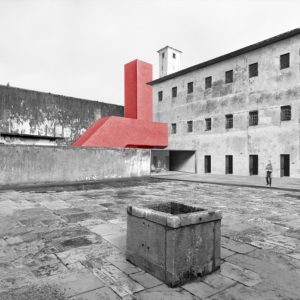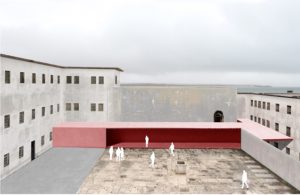
The Fortress of Peniche became a symbol of Resistance and fight for Freedom when it released its political prisoners on 27th April 1974. Hence, it was decided that the integrity of this historical, military and prison building ought to be preserved through the implementation of a museum project.
The Council of Ministers of the 21st Portuguese Constitutional Government that took place at the Fortress of Peniche on 6 May 2017 established a National Museum on this site that by preserving the memory of 48 years of suppression of freedom in Portugal will perpetuate an essential reflection for construction of the future.
Peniche Fortress Advisory Group Proposal
CICAM – Content Guide of the National Museum of Resistance and Freedom
Contributions of CITEM to CICAM
Resolution of the Council of Ministers no. 73/2017
National Museum of Resistance and Freedom – Museological Program
Order No. 9667/2018 – Creates the Executive Committee of the Peniche Museum (CEMP)
Atelier AR4, Arquitectura Lda – coordinator João Barros Matos
The museum idea is embodied in three overlapping periods: the fortress period, the era of political imprisonment and the presente day period of the museum, with recognition of the importance of safeguarding and preserving the whole complex. Conserving, adapting and rebuilding are complementary actions, part of the same process, which are at the core of the museological project.
The architecture project is based on the preservation and appreciation of existing spaces and buildings, taking account of their importance as a testimony and memory. The old prison was organized into separate, independente blocks, each consisting of a block of cells and a yard. The adaptation of the complex to a museum provides for the reorganization and overlapping of different types of routes, which are used to relate the buildings and yards of the central block and surrounding platforms. These include the museum’s own route through the buildings and courtyards of the former political prison and the visit to the 16th century fortress elements, as the essence of the military architecture of the complex.

The cistern yard, which was also the main prison yard, is the focal element of the design. It is intended to provide a space lived in and visited by locals and tourists, with free access through the reception hall and served by the cafeteria.
With the entrance through the old gate of the governor’s palace, the reception hall is an open space to the main yard, with counters, cloakroom, seating areas, access to gun emplacements and connection to the cafeteria and museum shop.
Organized around the cistern yard, the museum begins and ends in the reception hall, moving through the four blocks and four yards of the political prison’s central block and is structured in different blocks.
Each block has its own characteristics, related to the character of the existing spaces. The museological route shows a range of environments the cells of the high security block, white, cold and bare, and the remaining blocks, dedicated mainly to the theme of resistance to the fascist regime. These are characterized by gentle, precise light, with controlled sound and silence and materials that seek maximum comfort. Other spaces can be added to the main museological route, namely the gun emplacements and yards themselves.
The outside areas are used to showcase the condition of the site as an island, marked by isolation in relation to the area and the city. In this sense, the moat is recovered at the entrance, now landscaped, returning the presence of rock throughout its length and intensifying the approach route to the complex, over the bridge.
